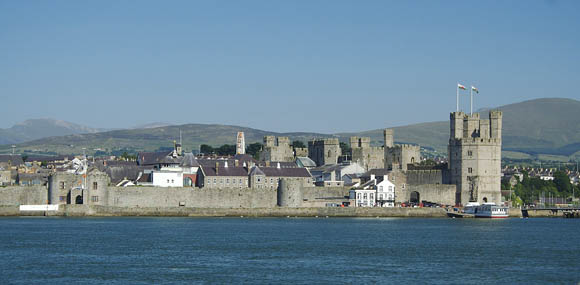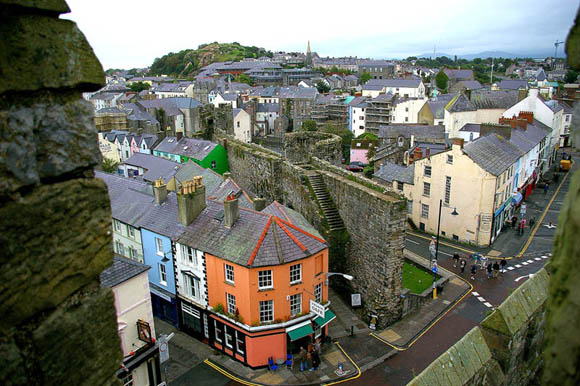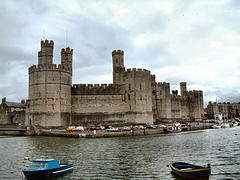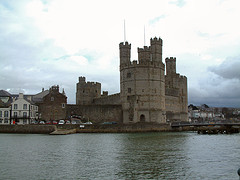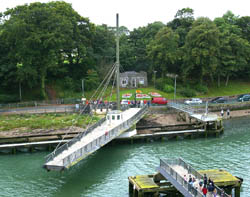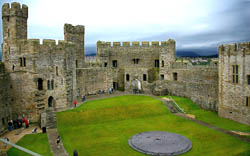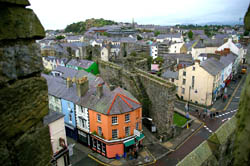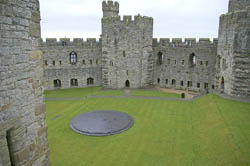Caernarfon (the Welsh spelling is now normally used in preference over the anglicised forms, "Caernarvon" or "Carnarvon") is a royal town in north-west Wales. It has a dwindling population of 9,611 (2001 census).
Caernarfon is the traditional county town of the traditional county of Caernarfonshire and was a county corporate in its own right. The town is best known for its great stone castle, built by Edward I of England and consequently sometimes seen as a symbol of English domination. Edward's architect, James of St. George, modelled the castle on the walls of Constantinople - Edward being devoted to the Crusader cause. On higher ground on the outskirts of the town are the remains of an earlier occupation, Segontium Roman Fort.
The population of Caernarfon is largely Welsh-speaking (92% of the population reported some level of Welsh ability in the 2001 census) and the town is nowadays a rallying-point for the Welsh Nationalist cause. In 1911, David Lloyd George, then Member of Parliament for the borough, conceived the idea of holding the investiture of the new Prince of Wales at Caernarfon Castle, believing that this would help pacify nationalist opinion whilst arousing a more British patriotic feeling. The ceremony took place on July 13, with the royal family paying a rare visit to the principality, and the future King Edward VIII was duly invested.
On July 1, 1969, the investiture ceremony was again repeated at Caernarfon Castle, the recipient on this occasion being Charles, Prince of Wales. Despite nationalist threats and protests, the ceremony went ahead without incident, except that two members of the Free Wales Army were blown up whilst trying to bomb a train the Prince was travelling on.
Caernarfon is also home to the regimental museum of the Royal Welch Fusiliers (archaic English spelling of the word Welsh).
Caernarfon railway station in St. Helen's Road is the northern terminus of the narrow gauge Welsh Highland Railway.
Caernarfon hosted the National Eisteddfod in 1862, 1894, 1906, 1921, 1935, 1959 and 1979. Unofficial National Eisteddfod events were also held there in 1877 and 1880.
Caernarfon residents are known colloquially as "Cofis". The word "Cofi" is also used locally in Caernarfon to describe the local dialect, which is a rather peculiar mixture of Welsh and English, swapping words and grammatical constructs somewhat haphazardly. |
